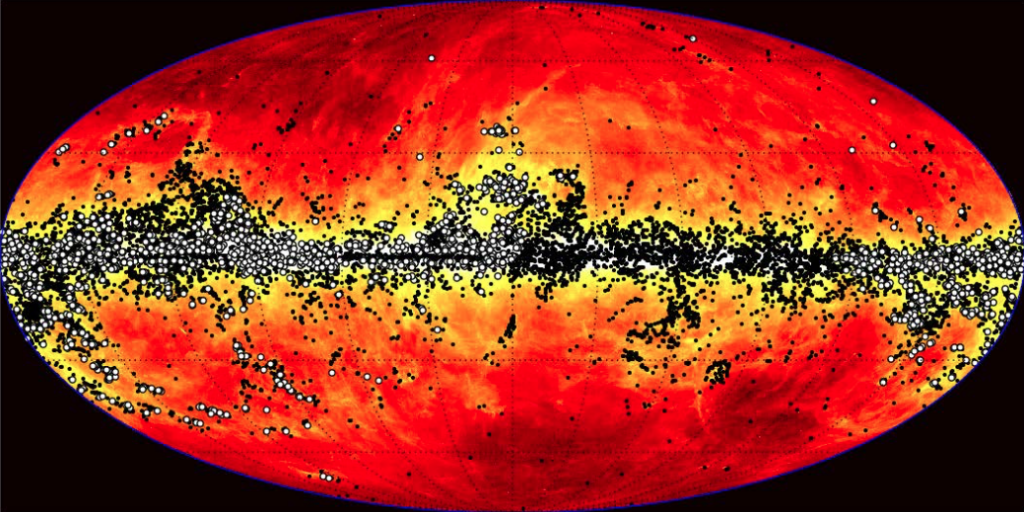* completed JCMT data collection July 2017
Stars form in the densest parts of molecular clouds, so–called prestellar cores. However, the formation and spatial distribution of prestellar cores in different kinds of molecular clouds is far from well known due to the lack of an “all-sky” census. The important connection between core formation and the hierarchical fragmentation of molecular clouds remains obscure. Now, the Planck telescope has provided us with an unprecedented sample of “all-sky” pre-stellar object candidates. Planck cold clumps correspond to the coldest portion of the ISM where stars form, and can be used to characterize the earliest stages of star formation.
In order to make significant progress in understanding the early evolution of molecular clouds and dense cores in a wide range of Galactic environments, we will carry out an unbiased “all-sky” 850 μm continuum survey of the ~1000 densest Planck cold clumps with the JCMT/SCUBA-2.

All-sky distribution of the 13188 PGCC sources (black dots) and the 2000 originally proposed PGCC sources (open dots) overlaid on the 857 GHz Planck map.
JCMT/SCUBA-2 is more sensitive to cold dust than are the Herschel bands, and also has high angular resolution to resolve the substructure of Planck cold clumps. Such an extensive high resolution continuum survey will allow comparison with infrared surveys such as WISE, VISTA & UKIDSS. Through this extensive survey, we will study
- how dense cores form and how star formation varies as a function of environment,
- the universality of filaments in the cold ISM and their roles in generating dense cores,
- the existence of a density threshold for dense core formation,
- how dust properties change in different environments, and
- how dust properties affect the chemical evolution of dense cores.
Our pilot studies have proved that these science goals are achievable.
We have performed related parallel surveys at other mm and radio telescopes (e.g., PMO, TRAO, KVN, …) and we will actively develop follow-up observations for this JCMT Large Program (e.g. at NRO 45-m, SMA). This will allow us to deepen the investigation of dense cores and star formation in widely different environments at the earliest evolutionary phases. These joint surveys (JCMT, PMO, TRAO, KVN, NRO 45-m, …) will also provide a unique legacy database for such studies with other instruments, especially with ALMA.
Coordinators: Tie Liu (SHAO, China), Kee-Tae (KASI, Korea) Mark Thompson (University of Hertfordshire, U.K.), Sheng-Yuan Liu (ASIAA, Taiwan), Gary Fuller (The University of Manchester, U.K.), Ken Tatematsu (NAOJ, Japan), Yuefang Wu (Peking University, P. R. China), Di Li (NAOC, P. R. China), James Di Francesco (NRC, Canada).
– JCMT program code: M16AL003
SCOPE JCMT publications can be found at the following ADS Library


